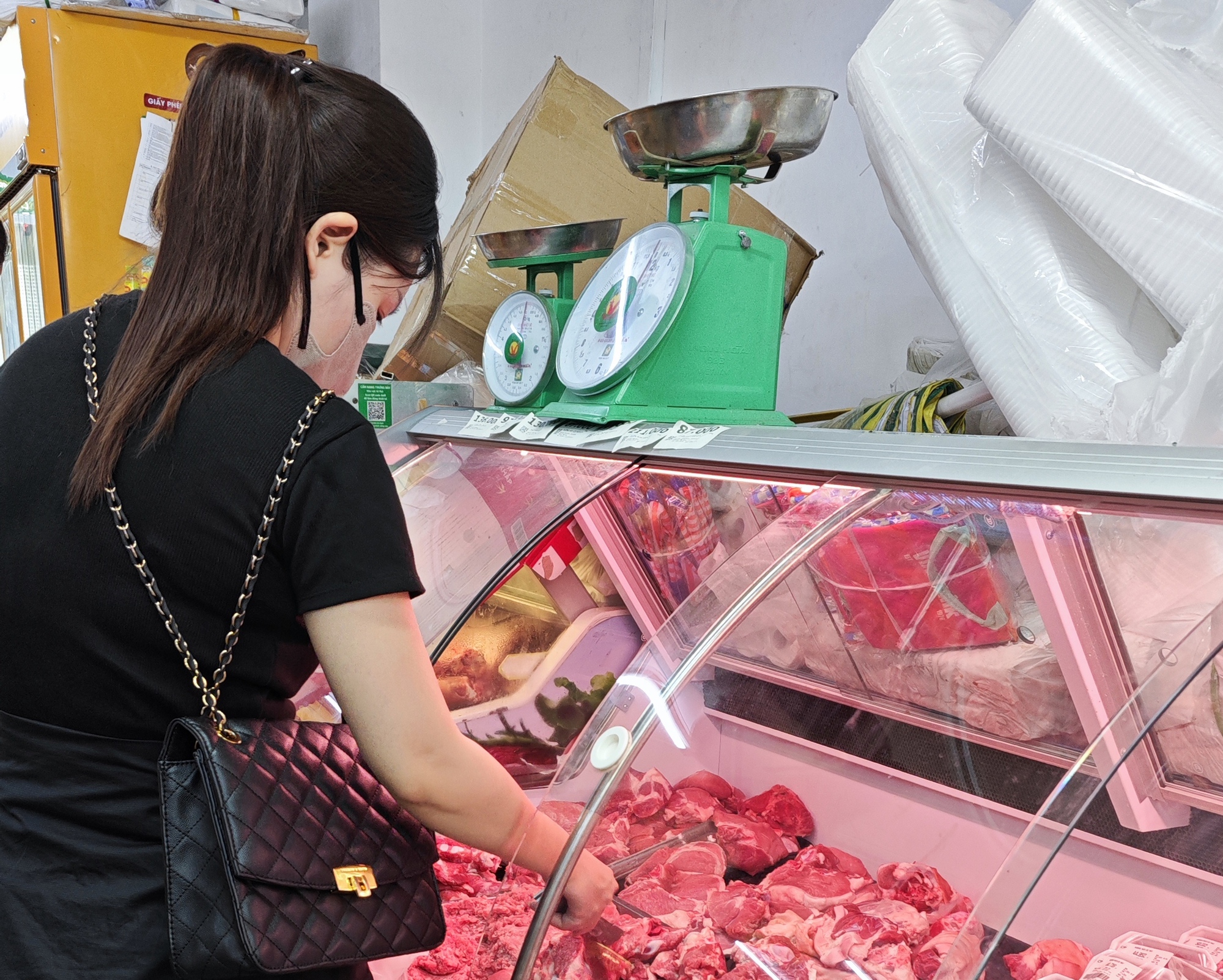The price of high-quality pork has surged to 68,000 VND/kg, with lower-grade pork reaching around 65,000 VND/kg. This marks a significant increase from the 50,000 VND/kg range seen at the start of the year. The Vietnam Livestock Association attributes this rise to a shortage in supply and market psychology.
Businesses reap substantial profits
At a recent annual general meeting of shareholders, Doan Nguyen Duc, Chairman of the Board of Directors of Hoang Anh Gia Lai Joint Stock Company (HAGL), expressed regret for not increasing their pig herd at the end of 2023, resulting in a current lack of pigs for slaughter.
According to Mr. Duc, pork prices have been favorable since the beginning of the year. With production costs ranging from 46,000 to 49,000 VND/kg, businesses can achieve profits of 30%-40%. HAGL has gained new resources from partners, including 30 billion VND for the development of the pig industry, and is actively working on increasing their herd.
This “pig boss” shared that the price increase cycle in the pig industry typically lasts for two years, with the upcoming cycle expected to span from 2024 to 2025. HAGL anticipates maximizing profits in the pig sector next year, amidst the complex evolution of the African swine fever. Only large enterprises that meet biosecurity conditions will be able to restock their herds.
BaF Vietnam Agriculture Joint Stock Company is also gearing up for the rising pork price cycle. The company predicts that the price of pork will remain above 60,000 VND/kg in the coming period, aiming for the 70,000 VND/kg mark. Meanwhile, the prices of raw materials and animal feed have decreased by 10%-20% compared to the previous period, contributing to improved farming efficiency. “The increase in pork prices, large output in the first quarter of 2024, and the sale of assets have helped us record a profit of nearly 150 billion VND, while in the same period last year, we incurred a loss of 42.6 billion VND,” revealed a representative of BaF Vietnam Agriculture Joint Stock Company.
Similarly, Dabaco Vietnam Joint Stock Company recorded a profit of nearly 73 billion VND in the first quarter of 2024 due to their bold decision to restock their pig herd at the end of last year. Previously, in the first quarter of 2023, the company had suffered a loss of 321 billion VND.

The continuous rise in pork prices has impacted consumers. Photo: AN NA
Multiple consequences
Dr. Nguyen Xuan Duong, Chairman of the Vietnam Livestock Association, attributes the current pork price hike to a shortage in supply following the African swine fever outbreak in late 2023. Additionally, the expectations of further price increases among some farmers and farms have led to a hoarding mentality, artificially creating a scarcity and driving prices even higher. According to forecasts, as summer approaches and the demand for pork products decreases, pork prices are expected to cool down.
“Pig farm owners and businesses should sell pigs as usual and avoid mass restocking to ensure stability and prevent a supply-demand imbalance. To harmonize the interests of all parties, a suitable pork price range would be 60,000-65,000 VND/kg. If prices are too high, it will stimulate imports, even illegal imports, which will negatively affect the livestock industry,” warned Mr. Duong.
The director of a food processing plant in Binh Duong shared that they are currently using 100% imported pork as raw material due to the high prices of domestic pork. “The price of imported pork belly ranges from 71,000 to 80,000 VND/kg, while the lean meat (leg and shoulder) costs only 65,000-72,000 VND/kg, much lower than domestic pork. We opt for imported pork to maintain stable product prices amid weak buying power,” the director explained.
According to many businesses, few countries have pork prices as high as Vietnam. This is due to the market’s reliance on large enterprises, creating a supply shortage. “It cannot be ruled out that large enterprises aim to maximize profits during this period to make up for previous losses, without considering consumers,” suggested the director of a food processing company.
Mr. Phan Van Dung, Deputy General Director of Vietnam Technical Commercial Joint Stock Bank (VISSAN), shared that the price of pork in the price stabilization program is based on a pork price of 60,000 VND/kg. According to regulations, when the cost of raw materials increases by 5%, businesses are entitled to propose a price increase. However, the new retail price has not been approved, causing difficulties for businesses. The leader of this enterprise stated that the demand for fresh pork has decreased by 15% compared to the beginning of the year, despite their efforts to stimulate consumption. In the coming months, pork consumption is not expected to improve as it is the low season for consumption.
The challenging equation for livestock businesses
Mr. Clemens Tan, General Director of Japfa Comfeed Vietnam Co., Ltd., attributed the high pork prices to a supply-demand imbalance but noted that this situation is only temporary. For a long time before that, there was an oversupply of pigs, while demand was very low, causing pork prices to plummet.
“From before Tet to now, Japfa Comfeed Vietnam has reduced its sow herd by about 40%. We have also redesigned our pig farming system, reviewed our entire farm system, and decisively halted operations in farms that do not meet environmental standards for repairs or permanent closure. In the short term, the company is both reducing its herd and the number of farms,” informed Mr. Clemens Tan.
T.Nhan












